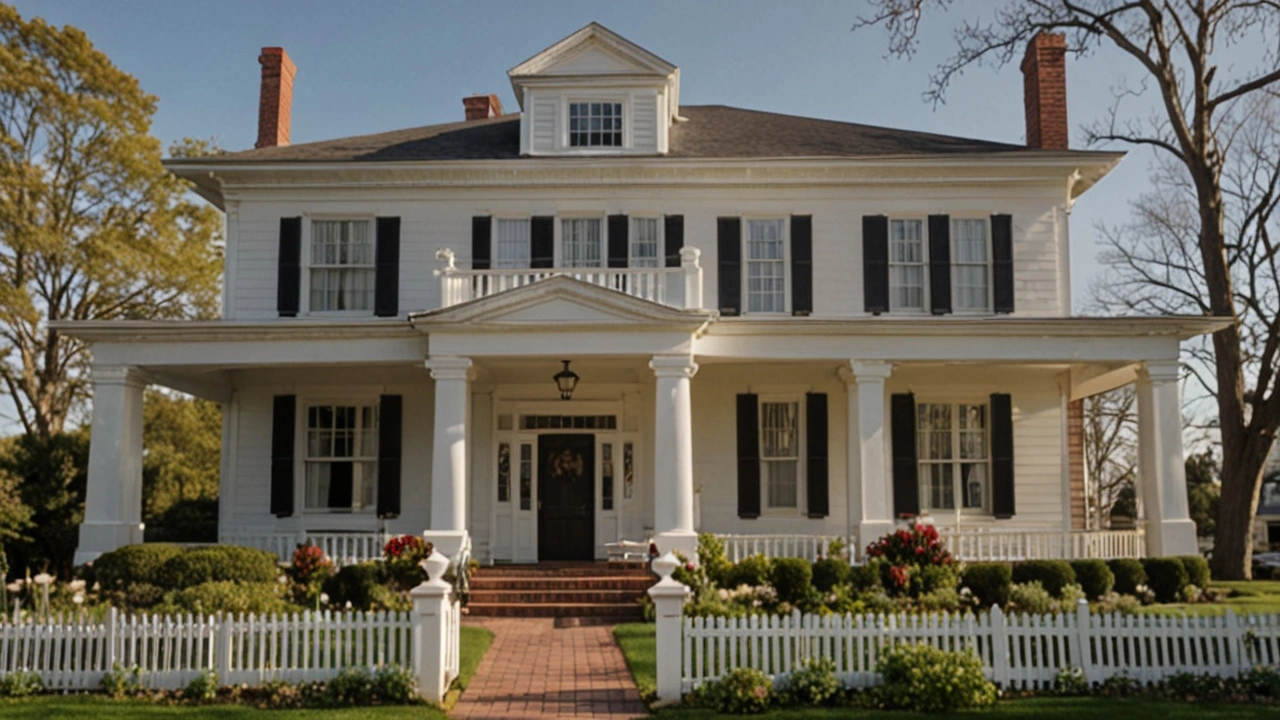Colonial Revival Architecture stands as a testament to the enduring charm and elegance of early American design influences. Both historical and practical, this style has remained a popular choice for homeowners and architects alike. From its symmetrical façades to the tasteful incorporation of classical elements, Colonial Revival continues to inspire modern designs and renovations across the country.
Colonial Revival Architecture: How to Spot It and Use It Today
Colonial Revival architecture borrows from early American building traditions and polishes them for modern use. It started in the late 19th century as a way to celebrate national roots, and it shows up in houses, schools, and civic buildings. If you want to recognize or work with this style, focus on clear, repeatable features and practical ways to preserve or adapt them.
Start by looking at the roof and the front. Colonial Revival roofs are usually side-gabled or hipped and often include dormers. The front door is a focal point: expect a centered entry, decorative crown or pediment, and flanking pilasters or sidelights. Symmetry matters—windows and chimneys usually balance across the facade. Materials are straightforward: brick, clapboard, or shingle siding are common.
Key features to recognize
Windows tend to be double-hung with multiple panes—6-over-6 or 9-over-9 patterns are typical. Shutters are often functional at first glance but may be fixed. Columns and porches borrow from classical sources: slender round columns or square posts support a modest porch or portico. Interior layouts favor a central hall with rooms on either side, useful for straightforward renovation plans. Trim work is restrained but deliberate: crown moldings, simple chair rails, and paneled doors show the period influence without flashy ornament.
Colonial Revival mixes substyles. You can see Georgian balance, Federal refinement, or Dutch and Southern regional details. That mix explains why two houses both labeled Colonial Revival can look quite different. If you’re documenting a home, note original materials, altered features, and any later additions. That record helps guide restoration choices and avoids removing features that actually belong to the house’s history.
Practical tips for renovation and design
Want to restore or adapt a Colonial Revival house? Preserve the entry and symmetry—these are key to the style’s character. When updating windows, choose wood or high-quality replication units with similar pane patterns. Keep porch proportions and column styles true to the original; small changes in scale quickly make a house read as modern instead of historic. For modern needs, place mechanical systems, kitchens, and bathrooms in areas that don’t break the main facade rhythm. Use paint and hardware that match the period tone: muted colors and simple brass or iron fittings work well.
For new construction inspired by Colonial Revival, prioritize proportion and rhythm over literal copying. A balanced facade, a clear entrance, and honest materials deliver the feel without pastiche. This approach gives you a home that reads as timeless rather than a theatrical replica.
If you’re researching or documenting a property, check local historic registers and old maps for accurate dates and ownership. Those records often reveal original plans or photos that make restoration decisions easier. Whether you’re restoring a family house or designing a new build with classic roots, Colonial Revival offers clear rules and flexible options—use them to make smart, durable design choices.
Quick checklist before work: photograph the facade and details, save paint chips, measure window openings, confirm original rooflines, and ask a historic architect about permits. Small records saved now save money later and protect the house’s character truly.
Hi there! In this post, we'll dive into the fascinating world of Colonial Revival Architecture and its reinvention in modern times. We'll explore its history, evolution, and how architects today are breathing life into traditional designs. Don't miss out on this journey through the reinvention of historic aesthetics in our contemporary world!


